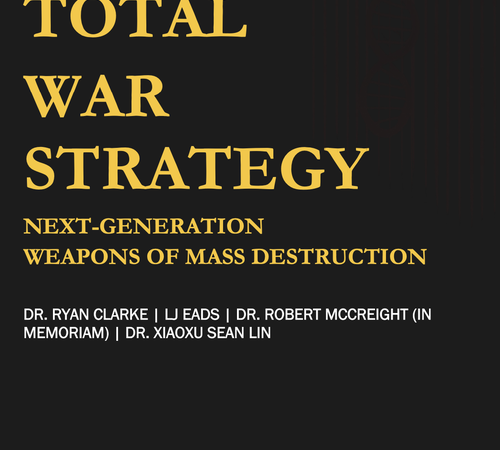Cotton farming in the Agriculture 4.0 era


Fifty years ago, Bangabandhu Sheikh Mujibur Rahman founded the Cotton Development Board (CDB). Today it has become a pioneer in fibre production. The CDB has survived peaks and troughs and it now works for the dignity and livelihood of people.
At the juncture of the 4th Industrial Revolution (4IR) and 4th Agricultural Revolution (4AR) or Agriculture 4.0, the CDB marks its fiftieth birth anniversary on December 14. The CDB solemnly remembers the contribution of the architect and founding father of Bangladesh, Sheikh Mujibur Rahman.
Bangladesh is a predominantly agrarian economy and it has been among the worst victims of climate change in recent decades. The country experienced extreme heat and shortage of rainwater in 2021. The entirety of the South Asian subcontinent also experienced its highest temperatures in 122 years. Due to a shortage of water and declining groundwater table, it is time to consider agricultural mitigation and adaptation in the face of this harsh climatic situation.
Cotton can address SDGs and food security
The global food sector not only needs to ensure zero emissions but also a net sink to offset positive emissions elsewhere. These are the big challenges that we need to address over the next 30 years.
Globally, food systems contribute more than one-third of total greenhouse emissions. About one-fifth of total emissions come specifically from agriculture, forestry and other land use. By using less water and inputs, sustainable cotton production can substantially help achieve net zero emissions.
A workable policy will help cotton farmers reduce poverty, ensure sustainability, and increase youth and female employment. Importantly, char (shoal) land and salinity-hit areas will be under cultivation. It will greatly benefit Bangladesh to achieve SDG-01 (no poverty), SDG-02 (zero hunger) and SDG-13 (climate action). To promote a circular economy, every step of cotton cultivation, processing and value-chain addition should be centred on sustainability.
Food security is not a mere political slogan or an election manifesto; it is more than that in many developing countries like Bangladesh. Food security issues in Bangladesh have been among the top priorities of the government’s Eighth Five-Year National Plan. Bangladesh stood 84th among 113 countries globally and the last among the South Asian nations, according to the 9th Annual Global Food Security Index (GFSI).
Increasing farmers’ income, ensuring jobs for the young generation, increasing women’s engagement in farming and marketing systems, and improving productivity are the key concerns.
Sustainable cotton production underpins all these burning issues. Increased purchasing capacity and proper resource mobilisation can enhance farmers’ ability to afford quality food. Through inter-cropping, crop rotation and income generation, cotton cultivation can address four basic parts of food security—availability, accessibility, stability and usability.
Like many other developing countries, textile brands in Bangladesh want 100% certified cotton by 2025. The only way smallholder farmers can get their cotton certified is by associating sustainable Responsible Environment Enhanced Livelihoods (REEL) cotton with food crops. It can ensure sustainability and value addition.
Farmers need to combine or rotate cotton production to food items such as mango, guava, maize, mustard, sunflower, beans, rice, wheat or sugarcane. Cotton Board and other national and international stockholders are extensively working to ensure productivity and reduce the use of chemical pesticides and other chemical inputs by using biopesticide, compost and bio-fertiliser.
Are we ready for a change?
The industrial and agricultural revolutions are synonymous, as they are complementary to each other. The industry cannot function without agriculture. We see revolution as a transition from ruralism to urbanisation, with the first revolution being motorisation, the second being mechanisation, the third being humanism and electronics, and the fourth being precision agriculture.
As agriculture is the biggest industry in countries like Bangladesh, this technological evolution will have to continue. Precision agriculture is more specific and accurate Artificial Intelligence (AI) – driven agro-farming. The 4AR explicitly underpins precision agriculture to ensure more specific intervention through a digital dividend (remote sensing, big data and internet of agro-things) for higher productivity and sustainability through efficient management of resources.
But the 4AR poses its own set of risks. The biggest challenges are the lack of skilled professionals, technical know-how, accessibility to high-speed internet and a gender-friendly IT scheme.
However, the agricultural revolution is inevitable and the future of fibre production greatly lies in how we reap the benefits of this transformation. For example, China is using drones to survey 20 million hectares of cotton, providing insights into pest protection, fertiliser and herbicide application, irrigation and harvest timing, to drive productivity.
By using nanotechnology in biotech research, we can introduce short-duration, high-yielding, drought- and flood-tolerant varieties. For example, biotech cotton may provide enhanced quality traits such as low levels of gossypol for edible oil purposes and improved fibre quality. CRISPR case technology, modern breeding techniques and sustainable agronomic practice can also boost cotton cultivation at the farmers’ level.
These approaches will enhance the ability to grow cotton in salty soil, especially in the southern region of Bangladesh, or better withstand drought conditions like in the northern region. Regional research stations can take projects for digital improvisation to explore prospects. Such innovations are increasingly important in adapting to or, in some cases, helping cushion the effects of climate change. So, nature-based research needs to be done.
Accordingly, extension services must be aligned with the trend to develop and execute those technologies and innovations at the growers’ level. The future of cotton farming greatly lies in how we augment the use of the internet of things/agriculture (IoT) in precision farming (irrigation, fertiliser management, pest control).
The use of smartphones connected with sensors, trackers, robots, drones, big data management, cloud computing and artificial intelligence will help make timely decisions at the growers’ level, especially in thrust areas like hills, char-land, barind tracts and coastal regions, as extension programmes are very difficult.
We can use remote sensing, drones and GPS for REEL cotton production, value addition and marketing. As for cotton, in every step from seed sowing to irrigation, fertiliser management, disease and pest control, and post-harvest management, we have to trace and improve all levels in the value chain. This smart agriculture can only transform our future farming system.
But have we ever thought about the farmers while advocating AI and IoT? Are our farmers ready to go with the trend right now?
Real-time data collection, transmission and processing can improve productivity and sustainability, but limited connectivity and access to digital technology are the barriers that need to be addressed right away.
For this, coordination, collaboration and integration are required among farmers, researchers and industrialists. Success stories of the latest technological advancement in agriculture need to be included in the secondary education system. Cooperative and big farming should be given priority. Mechanisation is needed but it needs to be adopted very carefully on the basis of farmers’ socio-economic condition, availability and accessibility. For this, we need farmer-friendly and customised digital adaptation.
An interdisciplinary (university, research institution, extension department, industries) approach is needed for holistic development in the bioscience business. Public-private partnerships and adequate investment are needed for globally competitive sustainable cotton.
We also need to develop a futuristic climate-smart research and extension policy. It is high time to address these issues to ensure food security, meet the increasing demand for fibre, maximise profit and also combat climate change by using less natural resources.
Md Mizanur Rahman is a Cotton Development Officer in the Rajshahi zone.
Disclaimer: The views and opinions expressed in this article are those of the author and do not necessarily reflect the opinions and views of The Business Standard.



